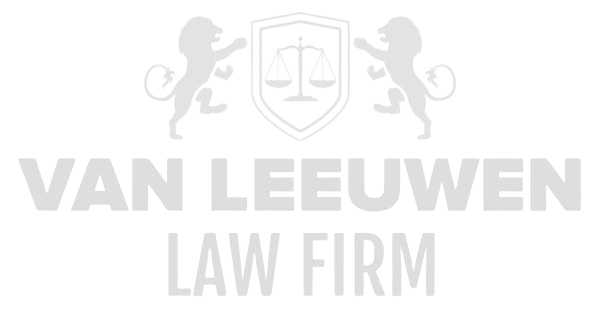Financial resilience forms the fundamental pillar for any organization aiming to survive and grow amid unpredictable and turbulent times. When an organization faces severe legal risks such as allegations of financial mismanagement, fraud, bribery, money laundering, corruption, or violations of international sanctions, its continuity is seriously threatened. These threats not only cause direct financial pressure but also undermine stakeholder trust and market reputation, placing the organization in an existential crisis. The ability to have sufficient capital and liquid assets available is not a luxury but a necessity. Without a clear understanding of the available financial capacity and the ability to swiftly and effectively utilize it, responding adequately to claims, fines, sanctions, and reputational damage often associated with such legal conflicts is nearly impossible. This means that identifying financial leverage mechanisms is an indispensable step to ensure resilience and enable strategic maneuvers in a crisis.
These leverage mechanisms are not merely technical financial operations but should be viewed as the result of a careful, multidisciplinary approach in which legal risks are an integral part of the financial strategy. From restructuring existing financing sources to attracting new investors who explicitly value ethical business practices, integrity, and transparency, all actions must be purposeful to minimize the negative impact of legal issues on cash flow and capital position. Scenario analyses that map out various crisis situations and their consequences in detail are crucial. By understanding the potential financial impact of worst-case scenarios, the organization can anticipate and proactively adjust when circumstances demand it. At the same time, protecting financial stability requires integrated collaboration between legal and financial disciplines, where risks are detected in time and contained through robust measures. Transparent and reliable reporting to stakeholders is a cornerstone, as maintaining trust is essential to keep the organization afloat during and after the crisis.
Mapping the Liquidity Position
A direct and uncompromising inventory of the liquidity position is essential in times when allegations of financial mismanagement, fraud, bribery, money laundering, corruption, or sanctions violations severely disrupt business operations. This entails not only accurately mapping the current cash flow but also thoroughly evaluating access to credit lines and the size of liquid reserves. This assessment must go beyond standard financial statements, also analyzing hidden risks and future obligations. Only by painting a complete and realistic picture of financial capacity can it be determined whether there is sufficient room to absorb legal claims, fines, or unexpected expenses without unnecessarily jeopardizing business continuity.
Moreover, it is vital to develop scenario analyses that simulate various worst-case scenarios, including, for example, a substantial fine, an expensive settlement, or the loss of a key customer. These analyses assist not only in assessing short-term impacts but also those in the medium and long term. The insights such scenarios provide enable optimization of liquidity planning and timely measures such as debt restructuring or seeking additional financing sources. A pragmatic estimation must be made of income stream volatility and potential depletion of financial buffers, as legal problems often have unpredictable financial consequences.
Finally, this liquidity inventory should not be seen as a one-time exercise but as a continuous process providing real-time insight into the organization’s financial health. Through dynamic dashboards and periodic updates, executives and financial management can remain constantly alert to signals of weakening or improvement. This enables proactive action and makes the company resilient against the legal and financial storms that may result from serious integrity violations.
Securing and Protecting Critical Assets
Protecting crucial business assets is indispensable when the organization faces serious allegations that threaten not only financial stability but also its very existence. Legal measures must be employed to firmly anchor strategic business assets, including intellectual property, real estate, and capital-intensive production resources, against imminent seizure or other enforcement actions. This requires in-depth knowledge of civil law enforcement procedures and a tactical approach that anticipates and counters possible legal actions by opposing parties. Timely protection of these assets prevents them from being misused as instruments in legal battles, thereby preserving the foundation of business operations.
Additionally, family and private assets are also important, especially in family businesses where the intertwining of private and corporate wealth is often significant. Properly structuring these asset components through legal entities, trust constructions, or other protective mechanisms is crucial to shield risks and prevent personal assets from being endangered. This calls for an integrated approach where legal, fiscal, and financial interests are closely aligned.
Besides the legal aspect, contractual protection also plays a key role. Careful drafting and revising of contracts, for example with suppliers, customers, and financiers, can include clauses that limit or postpone seizure or other adverse measures. Securing these contractual guarantees helps minimize operational disruptions and preserves the continuity of critical revenue streams, which is indispensable in times of legal pressure.
Renegotiation of Financing Terms
In situations where the company comes under pressure due to allegations of serious integrity violations, it becomes vital to critically review existing financing terms. Banks, investors, and credit insurers may tighten conditions due to increased risks, demand higher interest rates, or require additional securities. By engaging in strategic and targeted discussions, payment arrangements can be adjusted and covenants revised, thereby creating the financial breathing room necessary to timely respond to legal claims and other unexpected costs.
Such renegotiation requires thorough preparation, where not only the financial situation but also legal risks and potential consequences are clearly and transparently presented to financiers. It is about building trust and demonstrating that despite legal issues, the organization can meet its obligations and safeguard its continuity. Finding a balance between strictness and flexibility in the agreements is crucial here.
At the same time, renegotiation can also offer opportunities to restructure the financing mix, for instance by attracting new capital providers who understand the crisis and are willing to invest in recovery. This can help strengthen the capital structure, diversify risk, and better equip the organization against future legal and financial shocks.
Unlocking Hidden Value
Uncovering and leveraging hidden value within the organization is a strategic lever that is indispensable in crisis situations involving legal challenges. Often, organizations possess non-essential assets that are underutilized in normal times but can be the key to freeing up additional liquid funds during a crisis. These can include surplus business assets, real estate, or intellectual property that can be quickly converted into cash through sales or sale-and-leaseback arrangements. This approach not only strengthens liquidity but also reduces dependencies and creates financial flexibility.
Besides asset sales, optimizing working capital management plays a crucial role. By streamlining accounts receivable and payable management, improving inventory control, and adjusting payment terms, capital tied up unnecessarily in operational processes can be released. This is a continuous process that requires sharp analysis and tight execution, especially when legal risks demand attention.
Unlocking hidden value also requires deep, multidisciplinary analysis, where financial, legal, and operational experts work closely together. Through this joint approach, risks can be assessed, opportunities seized, and financial resources deployed strategically to guide the organization safely through the legal storm without compromising strategic capacity.
Cost Reduction Without Core Damage
Implementing cost reductions in an organization facing allegations of financial mismanagement, fraud, bribery, money laundering, corruption, or sanctions is a delicate operation. It demands a differentiated approach in which savings are realized without harming core activities and the company’s strategic strength. Hasty and ill-considered cuts can lead to the loss of crucial knowledge, customer relationships, or market share, worsening an already vulnerable position.
The first step is a thorough analysis of the cost structure, distinguishing between costs that directly contribute to value creation and those that are supportive or even redundant. It is important to purposefully phase out loss-making activities that also carry high legal and reputational risks. This may include divisions under scrutiny for fraud claims or activities leading to sanctions and reputational damage.
A thoughtful cost reduction strategy combines savings with investments in risk management and compliance so that the company not only becomes financially healthier but also restores and strengthens its integrity and reputation. This requires a long-term vision in which legal risks are fully integrated into decision-making and the organization remains agile for future challenges.
Use of Insurance and Claims
In a crisis situation where serious allegations of financial mismanagement, fraud, bribery, money laundering, corruption, or sanctions violations threaten business operations, the strategic use of insurance and claims can play a crucial role in maintaining financial stability. The first step is a detailed inventory of existing insurance policies to determine which risks are covered and the extent to which this coverage aligns with current legal challenges. This includes not only traditional general liability insurance but also policies covering specific risks such as directors and officers (D&O) liability, cyber risks, fraud, or sanctions breaches. Understanding the terms, exclusions, and maximum payout limits is essential to evaluating the financial resources available to mitigate the crisis.
Successfully claiming insurance benefits requires meticulous legal support. Insurance claims are often complicated by insurers seeking to limit or deny payouts due to alleged policy violations or accusations of intentional misconduct. Legal expertise is indispensable for preparing the claim adequately, gathering evidence, and negotiating with insurers. Furthermore, disputes may arise that require robust legal defense to secure entitlement to payouts. Effectively leveraging insurance can thus make the difference between financial survival and bankruptcy.
At the same time, it is critical to monitor potential claims from third parties, such as clients, suppliers, or regulators. A proactive approach with legal guidance can manage these claims, possibly settle them, and prevent unnecessary cash flow pressures. A comprehensive approach to insurance and claims serves as a strategic lever to mitigate financial risks and protect the organization from escalation of legal and financial problems.
Access to Alternative Financing Sources
When traditional financing channels are strained due to allegations of financial mismanagement, fraud, bribery, money laundering, corruption, or sanctions violations, exploring alternative financing sources becomes essential. Private equity investors, mezzanine lenders, and strategic partners can provide capital that not only strengthens liquidity but also signals confidence in the company’s restructuring and recovery potential. These financing options often offer greater flexibility than traditional loans but require rigorous legal due diligence to clarify risks for all parties involved.
In addition to private investment, government grants, guarantees, or support programs can play a key role in stabilizing the financial position. These resources are often tied to strict conditions and compliance requirements, particularly regarding sanctions legislation and anti-money laundering rules. Carefully assessing applicability and legal implications is crucial to ensure that government assistance does not later create additional risks.
Unlocking alternative financing sources requires a strategic, multidisciplinary approach in which financial experts, legal advisors, and compliance specialists collaborate to find optimal solutions. The combination of capital enhancement, risk management, and regulatory compliance ensures that the company not only survives but emerges stronger from the crisis.
Protection of Revenue Streams
Ensuring stable revenue streams is vital for organizations facing serious legal allegations such as fraud, corruption, or sanctions violations. Contractual safeguards can be implemented to ensure that strategic clients continue to meet payment obligations despite uncertainty and reputational damage during a crisis. This requires careful review and, where necessary, strengthening of contract terms, including clauses on payment security, guarantees, and penalties for non-compliance.
Moreover, it is essential to diversify markets and product lines to reduce dependency on a limited number of clients or regions. This mitigates the risk that legal problems in a single market or with a single client cause disproportionate financial damage. Broad revenue diversification enhances resilience and enables the company to better absorb shocks.
Alongside these measures, continuous monitoring is crucial to detect when risks in revenue streams increase. This allows the organization to act proactively, address payment issues, and avoid legal proceedings where possible. Maintaining strong client relationships and trust remains a cornerstone of financial recovery.
Integration of Compliance into Financial Decisions
The complexity of financial decisions increases exponentially when organizations face legal risks related to sanctions, anti-money laundering regulations, anti-corruption laws, and fraud prevention. In this context, it is no longer feasible to make financial decisions without integrated compliance assessment. Every transaction, investment, or restructuring must be evaluated for potential integrity risks and legal constraints.
This requires involving specialized compliance departments or external experts to screen financial transactions, potential investment partners, and internal restructuring measures. Early identification of actions that may violate sanctions or anti-money laundering rules helps prevent the organization from encountering legal trouble or incurring additional reputational damage. Continuous dialogue between financial management and compliance specialists ensures that decisions are economically sound and legally defensible.
Integrating compliance also strengthens internal risk management and supports adherence to external regulators. Using compliance as a strategic tool fosters a culture in which financial objectives are aligned with integrity and transparency, essential for maintaining trust and reputation in a high-risk environment.
Linking Financial Scenarios to Strategic Choices
In the face of serious allegations threatening an organization’s existence, it is crucial that financial scenarios are not considered in isolation but linked to strategic decisions made by executives and management. Every decision, from investments to restructuring and cost-saving measures, directly affects the company’s solvency, liquidity, and reputation. Understanding these consequences enables more informed choices that serve both financial and legal interests.
Dynamic financial dashboards and real-time analyses provide indispensable support in this context. They allow the company to model the impact of different scenarios in a rapidly changing environment, where legal developments can occur suddenly, and to compare potential outcomes. This enables agile decision-making, allows timely adjustments, and minimizes the risk of being caught off guard by unexpected negative effects.
Moreover, linking financial scenarios to strategic choices reinforces stakeholder confidence, including investors, banks, and regulators. It demonstrates that the organization has a firm grip on its situation and possesses a plan to address legal and financial challenges effectively. This establishes a solid foundation for recovery and sustainable growth, even under the most challenging circumstances.









